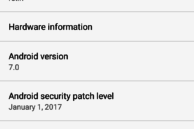
The Moto G series single-handedly brought back Motorola’s smartphone business back from the brink of extinction. While the company was eventually sold off to Lenovo after being acquired by Google, its Moto G series have continued to sell in millions of units across the world despite the constant change in its leadership and vision.
The Moto G4, however, was a misstep from Motorola as the handset lacked the premium build quality that other handsets from Chinese OEMs were packing. As if that was not already bad enough, the overheating issues caused by the Snapdragon 617 chipset inside the device did not help things either.
Learning from its mistakes, Motorola is back this year with the Moto G5 Plus. Sporting respectable internals and a camera specification that sounds awfully similar to what is present on the Galaxy S7, the Moto G5 Plus also addresses one of the longstanding issues with the Moto G series: build quality.
So, is the Moto G5 Plus the new budget king? Is it better than the likes of the Honor 6x and Xiaomi’s excellent Redmi Note 4? Find out in our review.
Moto G5 Plus Review
Design and Build Quality

I will be straight up honest with you: the design of the Moto G5 Plus is definitely not one of its strengths. When compared side-by-side against the Redmi Note 4, the Moto G5 Plus feels like a phone from yesteryear due to the huge top and bottom bezels. Thankfully, with the metal back, the Moto G5 Plus at least feels premium to touch this time around. The phone is still not entirely made of metal though, with the edges being made of plastic with a metallic finish.
The rear of the phone also houses plastic inserts at the top and bottom for the RF window. Then, there is also a huge circular camera bump — something that is rarely seen in mid-range smartphones. The microUSB port and headphone jack are located at the bottom, while the top houses the dual-SIM/microSD card slot. The Moto G5 Plus remains among the very few phones available in India to come with dual-SIM card slots and a microSD card slot.
The speaker is integrated into the earpiece at the front, so even though it is mono and not of particularly high quality, it can get pretty loud. The fingerprint scanner is located at the bottom chin but unlike other devices, it does not act as a capacitive home button.
The use of a metal back at the rear makes the Moto G5 Plus feel more premium than previous Moto G devices, but I will still say that its design and build quality continue to remain a notch below other mid-range smartphones like the Redmi Note 4. In particular, the design of the handset is not very attractive and can be a deal breaker for money.

Display
While most mid-range smartphones in India come with a 5.5-inch display, the Moto G5 Plus features a slightly smaller 5.2-inch 1080p display. Previous Moto G smartphones have had dull displays when compared to their competition, and the same trend continues with the Moto G5 Plus here. The display on the G5 Plus pales in comparison to what is found on Xiaomi’s Redmi Note 4. The former’s display is not laminated and looks dull, while the Redmi Note 4’s display is laminated and protected by Corning’s 2.5D Gorilla Glass.
Being an IPS panel, the viewing angles of the panel are excellent but the brightness level leaves a lot to be desired. This makes it particularly hard to see the display in direct sunlight. There’s not much that can be done to fix the dullness of the display as well — even switching to ‘Vibrant’ color mode hardly makes much of a difference.

Overall, the 5.2-inch display of the Moto G5 Plus is strictly ok, with its low brightness level and dullness being a disappointment.
Software
Like with previous Moto devices, the Moto G5 Plus also runs on a near-stock build of Android. The handset currently is running on Android 7.0, which is surprising since Android 7.1 has been out for quite a few months now and brings about some noticeable improvements to touch latency. Nonetheless, the G5 Plus offers an almost stock Android experience with just a few additional enhancements thrown in. Unlike other devices, there are no bloatware or unnecessary features here to slow the device down.
The G5 Plus continues to feature Motorola’s excellent Moto Display and other features like double twist to launch camera gesture, chop chop gesture to launch flashlight, and more. A new feature on the Moto G5 Plus worth noting is One Button Nav which essentially turns the fingerprint sensor on the front into a navigation bar. Once enabled, you need to swipe left to go back while a right swipe will bring up the Recent Apps list. The navigation bar is hidden in this mode to free up real screen estate. There is also a one-handed mode which can be activated by swiping up on the home button. It shrinks the UI of the G5 Plus down to make it easily usable with one hand.
Running the (almost) latest version of Android with no bloatware and some useful enhancements thrown in, there is little that one can complain about the software experience offered by the Moto G5 Plus. If you want your phone to be filled with customisation options and features though, you should look elsewhere.
Performance & Battery Life
Like many other mid-range smartphones launched this year, the Moto G5 Plus sports Qualcomm’s excellent octa-core Snapdragon 625 chipset running at 2GHz and an Adreno 506 GPU. Since the chipset is based on the 14nm fabrication process, it has no overheating issues that plagued the Moto G4 Plus.
The display and build quality of the Moto G5 Plus might not be as good as some of its competitor, but the handset excels in the performance department. The combination of a near-stock build of Android Nougat, no bloatware, and the Snapdragon 625 chipset ensures that the Moto G5 Plus is a performance champion. During my usage of over 2 weeks, the handset never lagged or slowed down while browsing and running my usual set of apps like Twitter, Chrome, Play Music, Endomondo etc. The Adreno 506 GPU can show some hint of stutters during certain areas of playing heavy games like Asphalt 8 or Asphalt Xtreme, but it is nothing so bad to be a cause of concern.
While there are other phones that also feature a Snapdragon 625 chipset, none of them can match the performance offered by the Moto G5 Plus. And knowing Moto devices, the G5 Plus performance is not going to deteriorate with time as well.
The 3000mAh battery capacity of the Moto G5 Plus is on the lower side when you compare it to other smartphones in the same price bracket. The Redmi Note 4, for example, comes with a 4100mAh battery which allows it to last for almost 2 days on a single charge. The Moto G5 Plus is not as good as the Redmi Note 4 in the battery life department, but its combination of a 3000mAh battery and an efficient Snapdragon 625 chipset ensures that it can easily last a full day of heavy use. Admittedly though, after using the likes of the Redmi Note 4 and Honor 6X, I will say I found the battery life of the Moto G5 Plus a bit of a downer. On the bright side though, the Moto G5 Plus supports TurboPower25 charging. This means that if you ever need to recharge your device during the middle of the day, you can be rest assured that a few minutes of charging will be enough to make the phone last through the night.
Camera

On paper, the rear camera setup of the Moto G5 Plus sounds very impressive. After all, the 12MP f/1.7 camera setup is very similar to the one found on Samsung’s Galaxy S7 and that phone was known for its camera prowess. It does lack OIS and uses an inferior ISP, but it still features a large f/1.7 aperture and 1.4um pixels that should greatly help in low light. Plus, the excellent Dual Pixel autofocus technology is also present.
There are two ways to look at the camera performance of the Moto G5 Plus. For a phone that costs less than $250/Rs 18,000, the G5 Plus camera performance is excellent and cannot be matched by any of its competitors. The Honor 6X does come close with better color accuracy and sharpness, but it is something that Moto will likely improve with a future software update. Plus, the Moto G5 Plus offers 4K video recording and Auto HDR mode that other phones in this price range lack.
Coming to the second part, for a phone with such impressive camera specs, the G5 Plus camera performance is a bit underwhelming. This all boils down to the weaker ISP and Moto’s post processing that ruins photos with poor exposure and high ISO levels. Additionally, despite the presence of Dual Pixel autofocus, the Moto G5 Plus does not focus as accurately as the Galaxy S7. The camera setup of the Moto G5 Plus might be similar to that of the Galaxy S7, but its camera performance is nowhere close. This all boils down to Moto’s execution which fails to take utmost advantage of the hardware. On the positive side, this leaves a lot of room for Moto to further improve the camera performance of the G5 Plus with future updates.
The 5MP f/2.2 shooter at the front is decent, though selfie lovers might not particularly like it since its photos are not as sharp as the ones taken from the likes of Honor 6x and Oppo A57.
Conclusion

The Moto G5 Plus is not without its flaws. It is clearly inferior to its competition in some aspects, with the dull display and design particularly being a disappointment. Despite its flaws though, it is an excellent mid-range handset. The excellent combination of hardware, software, and camera setup ensures that the G5 Plus will age well unlike many other devices out there. As for its camera performance, while it is impressive, there is still room for improvement here.
If you live in India and are looking for a smartphone with Rs 15,000-Rs 17,000 range with battery life not being your top priority, the Moto G5 Plus is a no-brainer. If you don’t really care about the camera performance and want a phone with two-day battery life, Xiaomi’s excellent (and cheaper) Redmi Note 4 will be your best.
































